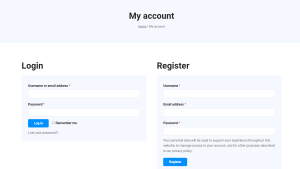Dynamic Websites
Dynamic websites generate and change web pages and contents of pages in real time based on user interaction, input, or external sources. Unlike Static websites where information and contents are fixed and stored in HTML files directly, Dynamic websites store and retrieve much of its contents and information into and from the database.
Dynamic pages and contents are highly customizable based on user interaction and preferences.
Following is a list of key features and components of dynamic websites.

Server-side programming/Scripting Languages
Dynamic websites use server-side scripting languages like JAVA, PHP, Python, ASP.NET, Ruby, or Node.js to generate and render content. User interaction and request is processed in the server by server scripting and the desired result and contents are presented to the users in different form and shape. Depending on user request contents are generated by the interaction with databases.

User Interaction and Actions
Dynamic websites allow users to register, create accounts, log in, do online shopping, and may be able to manage their accounts according to their preferences. Websites like forums, e-commerce, social media platforms, and shopping carts allow users such interactivities.
Database Communication and Integration
Dynamic websites store and fetch data into and from databases e.g. Oracle Database, MySQL, or PostgreSQL. When a user requests specific information or content, the server interacts with the database using database queries to retrieve the necessary data and information from the database and present it to the user on the web page. Similarly, if a user input and submit information using web forms, the server communicates with the database to store the data into the database. This data can include product information, blog posts, user profiles, website settings preferences, and more.
User Interaction
Dynamic websites allow user interaction using different methods such as form inputs and button actions. This interactivity is a must-feature for social media, forums, and e-commerce shopping platforms. Dynamic websites use user registration, login, and settings forms to allow users to create and update their account information and profiles. These input forms also help users to update settings according to their preferences.

Content Management Systems (CMS)
Many dynamic website platforms such as WordPress, Joomla, Drupal, or custom CMS make it easy for non-technical users to manage and update website content. Users can update their content and information like images, multimedia, and text using many input and settings tools provided by CMS platforms. CMSs can be open source free, paid, or partially paid. The majority of them also offer free or paid plugins and modules to add additional features to these CMSs.
More updates on this topic are coming soon…





